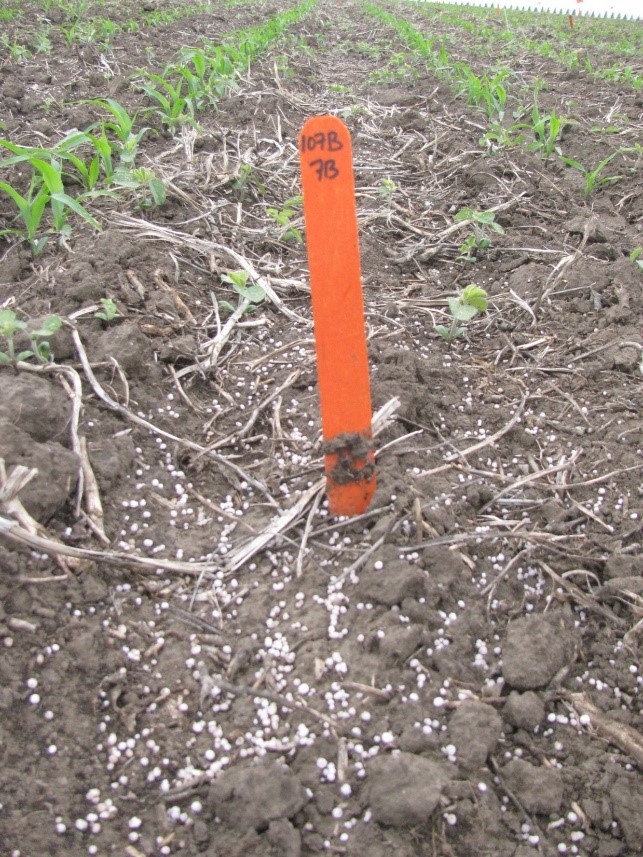Some Things to Know If You Are Planning to Use Nitrogen Stabilizers
What are N stabilizers?
Nitrogen stabilizers are substances or mixtures that prevent or hinder N loss from fertilizers through the process of urease production, nitrification, denitrification, or ammonia volatilization.
It is important that farmers have an idea of what these products do, especially as the use of N stabilizers is often not cost effective.
Processes that N stabilizers impact
Urease production: Urease is an enzyme that is widespread in soils and produced by soil organisms and plants. It is involved in the breakdown of urea to produce ammonia (NH3) gas.
When urea is treated with a urease inhibitor before it is applied to the soil, the inhibitor hinders urease enzymes from converting urea into ammonia gas, which is lost to the atmosphere.
A urease inhibitor, e.g., Agrotain®, is mainly effective when the fertilizer is left on the soil surface (Figure 1), or is covered by just an inch of soil (providing stability for about 10 days).

Figure 1. Topdressing corn with urea treated with N stabilizer.
Nitrification occurs when soil organisms convert ammonium to nitrate (NO-3), which is the available form by which most plants take up N. Because nitrate can easily be moved deeper into the soil away from the reach of plant roots (nitrate leaching) by rainwater, nitrification inhibitors can minimize the loss.
Nitrification inhibitors (e.g. SuperU®, Agrotain Plus®, Instinct II, N-Serve) kill a specific group of bacteria (nitrifying bacteria), which are responsible for converting ammonium to nitrate.
Nitrification inhibitors are most valuable when NO3- losses are expected to be high from leaching or denitrification, under the following conditions:
- Wet or poorly drained soils
- Tile-drained soils
- Fall N application
Denitrification: When soil microbes convert nitrate-N or any N fertilizer to the gas form of N. This form of N is not easily used by plants but is easily lost to the atmosphere. This happens when the soil is too wet (saturated).
Ammonia volatilization: When N fertilizer is applied and left on the soil surface or covered with only a thin layer of soil, the N can be converted to NH3 and lost to the atmosphere. More N is lost as NH3 at soil pH greater than 7 when residue is left on soil.
Some products are proven to successfully reduce N release, because they effectively coat urea, and allow the N to be released slowly (e.g., ESN) to coincide with crop needs. However, the release can be too slow and the N become available too late. Preplant application and incorporation of a blend with urea (3 or 4-parts urea to 1-part ESN) before planting in spring could be beneficial to corn and wheat.
Remember to only use specific N stabilizers for what they are proven to do and only apply them when they are most needed.
Jasper M. Teboh, Ph. D.
Jasper.Teboh@ndsu.edu
Research Soil Scientist


